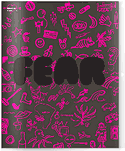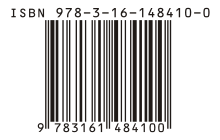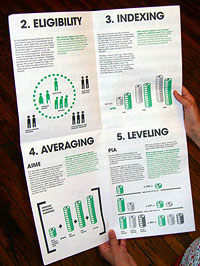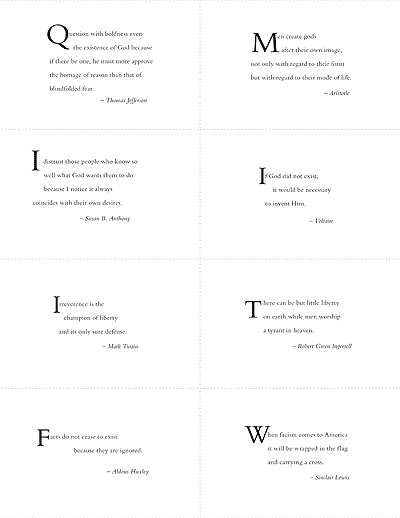publishing
Multiple-Use Names
 A nonprofit arts-education program introducing underserved youth in Portland, OR to the power of design and storytelling by publishing a theme-based, expressive magazine about issues affecting youth worldwide. Youth are given on-the-job training in writing, art and graphic design.
A nonprofit arts-education program introducing underserved youth in Portland, OR to the power of design and storytelling by publishing a theme-based, expressive magazine about issues affecting youth worldwide. Youth are given on-the-job training in writing, art and graphic design.Another great project for my list of design non-profits.

Local Number Portability
 Two friends have self-financed a book themselves, from design to printing, and are now scraping together cash to fund a second print run. The publisher has been of little help, providing some distribution and order fulfillment, but not much else. Given that the first printing has mostly sold out, I asked why they don’t find a more invested publisher to help fund the second run. The response: the ISBN number, a book’s unique commercial identifier, can not transfer from one publisher to another. Publishers purchase blocks of ISBN numbers, and the number includes a segment that identifies that publisher.
Two friends have self-financed a book themselves, from design to printing, and are now scraping together cash to fund a second print run. The publisher has been of little help, providing some distribution and order fulfillment, but not much else. Given that the first printing has mostly sold out, I asked why they don’t find a more invested publisher to help fund the second run. The response: the ISBN number, a book’s unique commercial identifier, can not transfer from one publisher to another. Publishers purchase blocks of ISBN numbers, and the number includes a segment that identifies that publisher.
Sure, you can always get a new ISBN number, and are encouraged to do so, if the book has significant changes. But given the multi-year struggle to get the first edition out, significant changes are unlikely soon. You can also get an ISBN number yourself, but this may preclude working with an existing publisher. And before you ask, this specific book doesn’t make sense as a PDF download. It’s a large-format art book.
Because much of my casual reading is on the internet, a large degree of data portability seems normal and natural to me. I suppose publishers should have some protection of their investment in a book to prevent others from poaching a successful product. But it seems to me like this should be a contractual obligation not something baked into the standard book identification system!
Update, 9/13/08: Morris Rosenthal, whose site I link to about obtaining an ISBN, sends this clarification:
“You’re correct that the ISBN ties an edition to a publisher, that’s baked into the system. But if your friends own the rights to the book, they don’t need to make any changes to release a new edition with a new ISBN, it will simply be a different edition from a different publisher, even if the publisher is them. There aren’t any laws about how ISBN’s must be used (even though the ISBN agency, Bowker, is a government granted monopoly in the US), some small publishers even release totally new edition WITHOUT changing the ISBN, so they don’t risk losing the built-up position on Amazon.
If you’re curious, here’s a recent piece I wrote on revised editions.”
Making Policy Public: Call for Designers
 The Center for Urban Pedagogy sends along this open call for designers for its series of borchure-and-poster visual briefs on vital issues in US policy. Their text:
The Center for Urban Pedagogy sends along this open call for designers for its series of borchure-and-poster visual briefs on vital issues in US policy. Their text:
“Making Policy Public, CUP’s new collaborative series of publications, uses innovative graphic design to explore and explain public policy. Our distinguished jury has selected advocates’ proposals for the next issues of Making Policy Public. We are now seeking designers to collaborate with these advocates to illuminate the issues. Designers chosen through the juried submission process will receive full attribution for their work, an honorarium of $1000, and publicity through CUP.”
See the four policy briefs for 2008, as well as previous briefs on The Cargo Chain and The Social Security Risk Machine.
Expressions of interest and a limited portfolio are due Monday, June 16.
For submission guidelines and more about the project, visit the Making Policy Public website: http://www.makingpolicypublic.net
Persuasion
From a February 2008 interview with Steve Duenes, graphics director for The New York Times:
From: Nicholas Kristof
Subject: the power of artin september i traveled with bill gates to africa to look at his work fighting aids there. while setting the trip up, it emerged that his initial interest in giving pots of money to fight disease had arisen after he and melinda read a two-part series of articles i did on third world disease in January 1997. until then, their plan had been to give money mainly to get countries wired and full of computers.
bill and melinda recently reread those pieces, and said that it was the second piece in the series, about bad water and diarrhea killing millions of kids a year, that really got them thinking of public health. Great! I was really proud of this impact that my worldwide reporting and 3,500-word article had had. But then bill confessed that actually it wasn't the article itself that had grabbed him so much -- it was the graphic. It was just a two column, inside graphic, very simple, listing third world health problems and how many people they kill. but he remembered it after all those years and said that it was the single thing that got him redirected toward public health.
No graphic in human history has saved so many lives in africa and asia.
A little over the top, but it’s a nice story. Though while Mr. Kristof celebrates, this seems as much an indictment of NY Times coverage of rural poverty. (via)
Updated April 28, 2008: I dug up the graphic in question, posted it here, and added a link in the text above.
Atheism Cards

Traveling for the holidays? It’s always disturbed me that U.S. hotel rooms always seem to stock a Holy Bible. Nevermind any other tradition, or say... The Englightenment. This year, I’m packing something of my own to leave behind: atheism cards! Each of these cards has a quote I think might sow a few seeds of dissent or perhaps start a long distance discourse. I plan to leave one inside the front cover of each bible I meet. Click the image below to download a printable PDF. Or make your own. There are plenty of choice quotes here and elsewhere.


